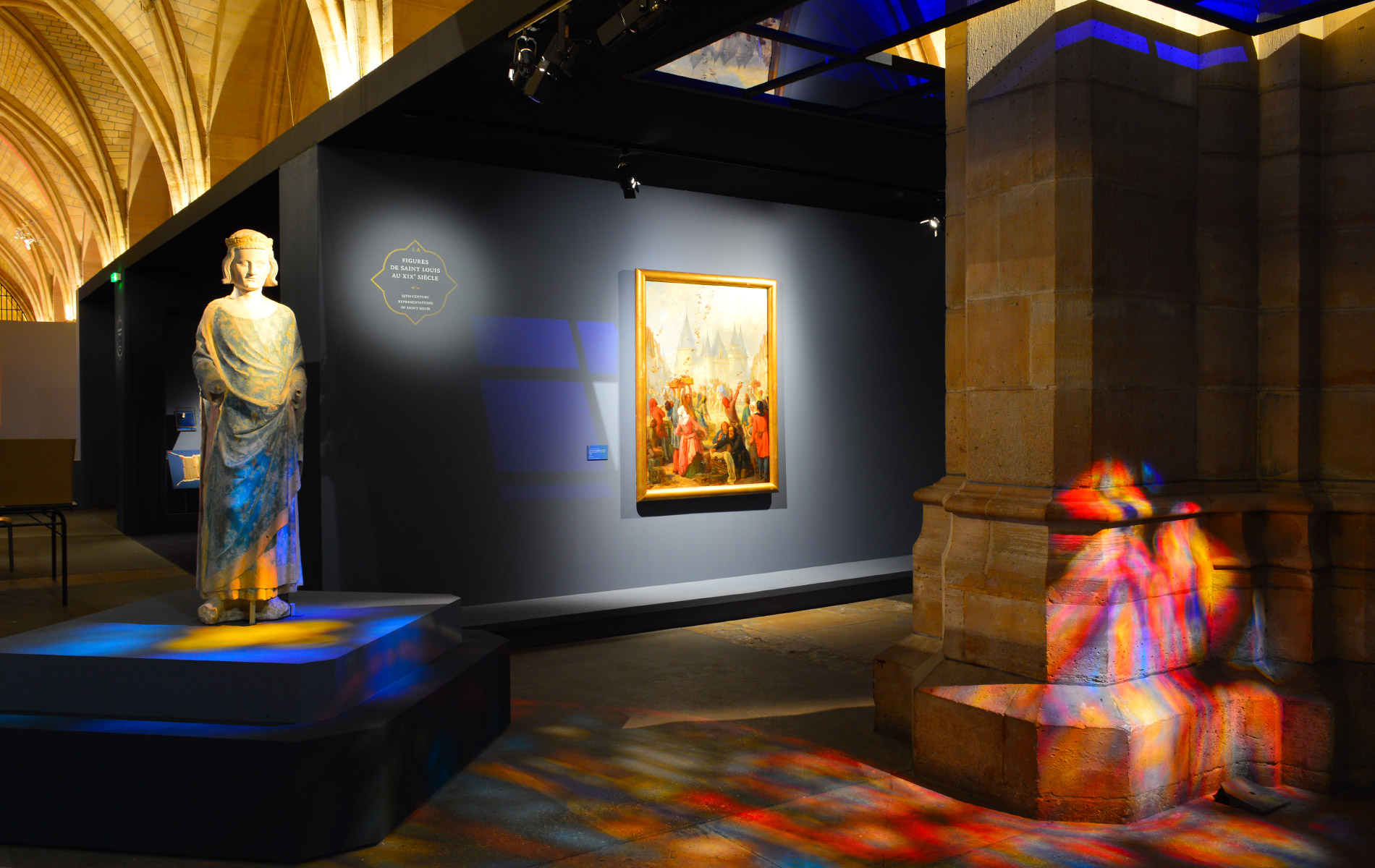Louis IX (1214 – 1270) was an intriguing man. This year France celebrates his 800-year anniversary with a very important exhibition in Paris

The bare facts are easy to present: Louis IX became king of France in 1226 when he was 12 years old. During his rather tumultuous youth, his mother, Blanche of Castille, governed, dealing with a series of baronial rebellions as well as putting an end to the Albigensian crusade against the Cathars.
Bequeathed with filled coffers he twice embarked on crusades, which both ended pitifully. During his first crusade his army was defeated and he and his men ended up in Egyptian captivity. After his release and having negotiated a peace-treaty, he spent four years in the Middle East trying to rebuild the defences of the Crusader.
After his return to France he worked to heighten the general law and order in his kingdom. He also aspired to fulfil his role as the exemplary Christian prince furthering religious institutions all over France. He is remembered as the king, who famously acquired the Crown of Thorns as well as other holy relics from Byzantium, to which end he had a spectacular shrine built: the Sainte Chapelle in Paris. Nearing the end, he embarked once more on a crusade. However, in Tunis, he became ill and died. Already in 1297 he was declared a saint by Pope Boniface VIII.
The biography of Le Goff
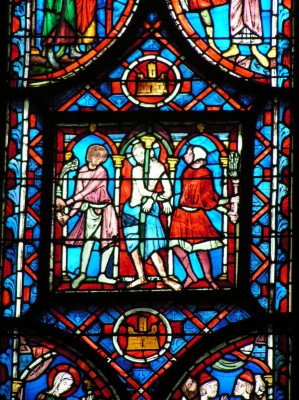
In 1996, the great French Historian, Jaques le Goff (1924 – 2014) published a huge biography of one of the arguably towering figures of the 13th century: the saintly French king, Louis IX.
In the book he told us how he originally started out on the project in order to find out whether it was at all possible to write a personal history of a man, who lived more than 700 years before. However, in the conclusion he wrote about, how the man grew upon him as he began over a ten-year period to collate all the little bits and pieces.
Well aware of the less than amiable traits like his support of the inquisition, his persecution of Jews, his crusading fervour and his masochistic traits, le Goff nevertheless fell victim to what he in the end came to see as a very charming man: A man who also laughed, loved his friends, enjoyed fresh fruit and liked to sit down in the garden while carrying out his business; and a man who was also genuinely generous towards the poor, the infirmed and the feeble and obviously more than fired by the special penitentiary form of mendicant piety, which was inspired by St. Francis of Assisi.
The biography of William Chester Jordan
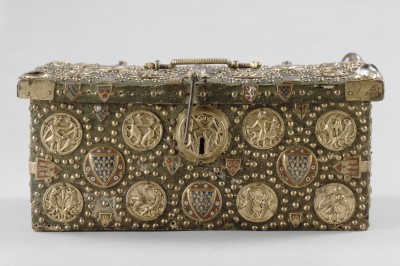
However, this rounded picture was less obviously also written to salvage the man from the fate of the American historian, William Chester Jordan, who in another biography from 1979 had described the saintly king as an utterly conflicted and immature man torn between on one side his tendency to asceticism and on the other side his mother, his royal obligations as a crusader and the appertaining lifestyle, which he was obliged to parade; all this leaving him with what has been characterised as a near schizophrenic pattern of behaviour and inducing him after his failed crusade to suffer penitential floggings by his confessor. (Today historians so inclined would probably claim he suffered a borderline personality; psychiatric diagnoses have changed since the 70s!).
The biography of Jean de Joinville
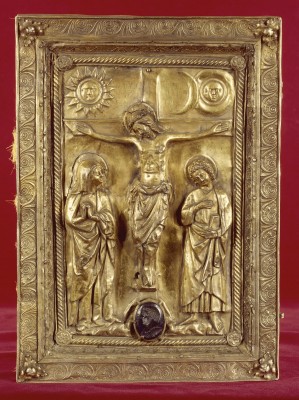
It would be utterly denigrating of the work of Le Goff’s to claim that it was foremost written to recapture the fame of a medieval French hero, who par excellence was always thought of as the first “sun-king”. The biography was obviously also written to leave us with a paradigmatic example of how to write biographies of people long dead; as such it has obviously inspired scores of other historians of which perhaps it makes especially sense to mention the biography of one of the main royal competitors of Louis IX: Frederick II: A Medieval Emperor (by Abulafia).
However, there is no doubt that Le Goff in the end fell victim to one of the most charming medieval texts, we posses: the biography, which the seneschal and old friend of Saint Louis, Jean de Joinville, wrote about the life of the king in 1309. Here the reader gets a series of delightful vignettes of life with a (perhaps not so saintly) king – in short: a man of blood, sweat and tears.
In the end, this is the man, which is at the centre of a series of very French exhibitions in Paris, Angers and Aigues Morte in 2014. It is perhaps in view of this fitting that one of the very last texts of Le Goff may be found in the introduction to the catalogue published in connection with the Paris exhibition and in which he (once more) tells us that St. Louis was a man who loved a good laugh…
The Exhibition in Paris
Anyone wishing to experience the life and times of Saint Louis is of course obliged to visit both the Sainte Chapelle and Notre Dame at the Île de la Cité. Here the king lived, whenever he was not crusading or touring his kingdom and it was here he had his main edifice built, his royal chapel called Sainte Chapelle, which was a remarkable compact Gothic edifice designed to hold all the relics, which he had acquired from Byzantium via Venice. Amongst these was of course the piece de resistance, the Crown of Thorns, which today is held at Notre–Dame together with some relics of the saint himself: his bloody shirt and his scourge. His celice or hair-shirt is kept at St. Aspais in Melun.
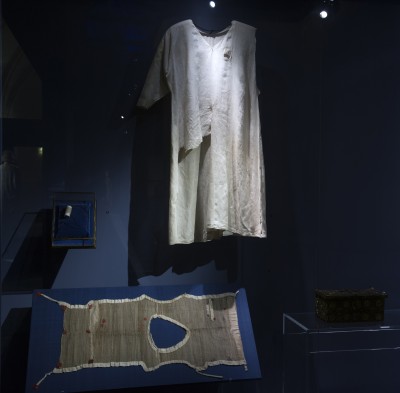
While the Crown of Thorns is not exhibited at the Concierge this autumn (it returned briefly to the Sainte Chapelle for a religious celebration in March 2014), the shirt, scourge and hair-shirt has been lent to the exhibition and takes pride of place after a parade of romanticising paintings from the 19th century. This is obviously an exhibition inviting the visitors to reach behind the myths and as such the shirt and the penitential instruments are soon followed up by box of Saint-Louis, which is dated to 1236 and from Limoges. It was here the celice was originally kept together with some bones reputedly said to stem from the cask of bones, which was carried back from Tunis by his brother. The main part was of course buried at St. Denis; however pieces were distributed to diverse institutions and apparently l’Abbaye de Notre Dame du Lys received a portion. However, the casket is earlier than the 14th century and medievalists have pondered whether the casket, which is now in the Louvre, was originally donated to the Abbey of Maubuisson, which received the heart of his mother as a gift in 1253.
This is not the place to mention all the exhibited treasures one after the other. However, special notice should be paid to the beautiful illuminated manuscripts, some of which are very seldom at view. One especially evocative manuscript is the so-called psalter of Blanche de Castille and Saint Louis (Biblioteque de l’Arsenal ms.1186 Rés), which it is believed the child learned to read from.
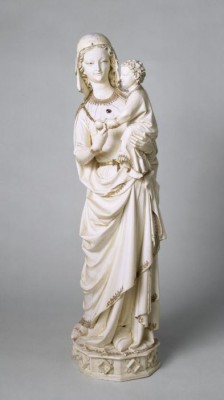
Pride of place though are the exhibits from the Sainte Chapelle: the beautiful cover of the Evangeliary, which miraculously survived the revolution, the lovely Virgin with child made of Ivory and not least several fragments of the original painted glass windows, which were first pitifully destroyed or sold off during the revolution. Later they underwent heavy-handed restoration as did the Chapel itself. But here – for the first time in more than 150 years they are on show. To this should be added fragments of the originally carved glory, which was hack to pieces by the angry mobs after 1789.
This is not a large exhibition. Only 129 pieces are on show, and some of those belong to the category of bland 19th century historicised paintings so beloved by the French bent on resurrecting the pre-revolutionary royal glory. But it is an enormously important exhibition, because it shows fragments of the artistic and visual world, which surrounded Louis IX and his family and entourage. As such it complements the two biographies mentioned above as well as a number of recent more specialised publications. Well worth a visit!
As opposed to this bonanza the exhibitions at Angers and Aigues Morte seem less important. One presents a newly found glazed window plus some more 19th century brick-a-brack. The other invites the visitor to take a walk along the ramparts and read the story of Joinville and the first 7th crusade. However, this walk is also possible next year…
VISIT:
Saint Louis 800
La Conciergerie, île des Paris 08.10.2014 – 11.01.2015
SEE MORE:
As part of the Exhibition at the Concierge it is possible to see a number of 3D reconstructions of Medieval Paris . These are exhibited at the end of the exhibition in the Conciergerie
In connection with the anniversary Châteaux et Patrimoine de France has produced a rather tacky video: Saint-Louis Louis IX Secrets d’Histoire. However the film gives an excellent introduction to the places connected with the king.
READ MORE:
 Saint Louis.
Saint Louis.
By Pierre-Yves le Pogam and Christine Vivet-Peclet (Eds)
Editions du Patrimoine Centre des monuments nationaux 2014
ISBN-10: 2757703412
ISBN-13: 978-2757703410
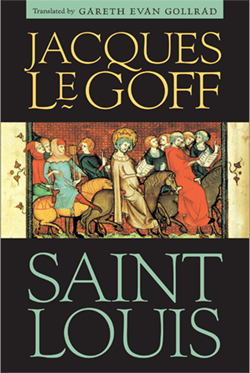 Saint Louis
Saint Louis
By Jacques Le Goff
University of Notre Dame Press 2009 (French edition. Folio Histoire 1996)
ISBN-10: 0268033811
ISBN-13: 978-0268033811
Louis IX: The Challenge of the Crusade: A Study in Rulership
by William Chester Jordan
Princeton University Press 1979
ISBN-10: 0691052859
ISBN-13: 978-0691052854
Chronicles of the Crusades (Penguin Classics)
By by Jean de Joinville and Geffroy de Villehardouin
Penguin Classics 2009
ISBN-10: 0140449981
ISBN-13: 978-0140449983
